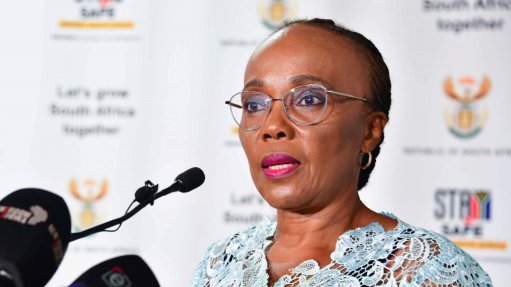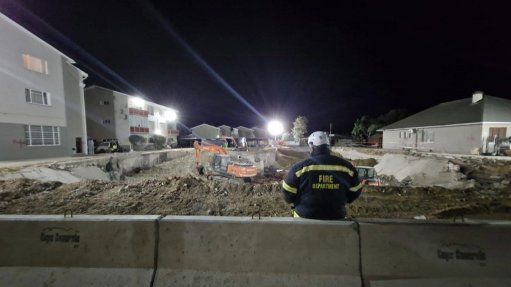Gautrain Management Agency starts process to appoint new concessionaire
The Gautrain Management Agency (GMA) is ready to go to market with the tender for the reconcessioning of the 80-km rapid-rail system, says CEO William Dachs.
The GMA, an agency of the Gauteng provincial government, signed the agreement with current operator, the Bombela Consortium, in 2006, which means the 20-year concession comes to an end in March 2026.
Bombela consists of the Bombela Concession Company (BCC), which did the final design of the Gautrain system, while also building it, and the Bombela Operating Company (BOC), which was contracted by the BCC to maintain and operate the service.
Bombela started construction in 2006, completing the Phase 1 Sandton–OR Tambo International Airport (ORTIA) link in time for the 2010 FIFA World Cup.
Phase 2 was the North–South line from Hatfield station, in Tshwane, to Park station, in Johannesburg. This service started operating in 2012, with the link from Hatfield to Rosebank opening in 2011 already.
BOC consists of French company RATP Dèveloppement and South Africa’s Strategic Partners Group.
“We have a great system that is running well, and we certainly want that to continue,” says Dachs.
He notes that the GMA has in place 99% of the approvals it needs for the reconcessioning of the Gautrain, including those from the Gauteng government’s provincial Treasury and the national Department of Transport.
The GMA has also wrapped up the required feasibility studies for the proposed changes to the Gautrain system under a new, 15-year concession.
The GMA aims to host an investor conference towards the end of March, similar to the one held in 2001, followed by the release of the tender documents by the end of April.
“It is a pretty tight timeframe,” says Dachs. “You have to consider that you need a handover period of at least six months – preferably a bit longer – to the new concessionaire.”
The entire 80 km Gautrain system will go on tender as one operation to maintain and operate – trains, feeder and distribution systems, and stations included – with an added element of reinvestment.
“The trains will be 15 years and older and they will need refurbishment, for example, and/or we would need new locally made trains,” says Dachs.
He adds that interested parties can expect an average requirement of 65% local content across the board.
“This may be 100% for certain of the manufacturing elements and less for some high-tech elements.”
Dachs believes the Passenger Rail Agency of South Africa’s (PRASA’s) rolling stock procurement programme should boost the GMA’s local content goals, as it has aided in kickstarting the local rail manufacturing supply chain.
He adds that the Gauteng government will remain the owner of the Gautrain under the new concession, with the system’s replacement value set at R45-billion.
He says the new concession will be operator-led, and not construction-led as in 2006.
“There are no construction elements to the new contract. Expanding the system will not be included in the tender document.”
Gautrain Phase 2 remains on the table, however, with the GMA continuing with route determinations and planning for future extensions to the system.
“There is only 900 km of rail in Gauteng and the province’s population will continue to boom,” says Dachs.
Fresh Start
The current Gautrain system will be paid off by 2026.
“This means we can have a fresh start and we can look at several enhancements to the system,” says Dachs.
“We can get a new look and feel, if necessary. We can add new trains and a new signalling system and we can bring a new look to the stations.
“The Gautrain system has been really well maintained,” he notes.
“We are happy with the performance, the standards. What we want to do now is see what more can be done to improve the Gautrain experience.”
Dachs says the tender documents for the second concession round will set certain parameters, with interested parties then designing their bids around these specifications, while they are also expected to propose some innovations on operating the system up to 2041.
“We expect to return to an overcrowding situation in 2026,” says Dachs.
“This means we would like to know about cost-effective ways to manage that situation. Do you, for example, buy new, additional trains and run them at shorter intervals?
“We’ll certainly be looking for new technology,” he adds.
“The GMA believes that the current ticketing system can be improved to become more user-friendly from a passenger point of view.
“We also think that the signalling system can be upgraded to provide more efficiency from an operational point of view.”
Train intervals on weekends are currently at 30 minutes, which can be quite a long wait. In the week it is 12 minutes during peak times.
A new signalling system could help shorten these intervals.
The Gautrain currently moves 30 000 people per weekday, which is double the number from a year ago.
Covid-19 and the subsequent trend of working from home have cut passenger numbers, which reached 60 000 daily passengers at its peak.
No More Ridership Guarantee
One significant change the GMA will implement within a new concession agreement is that the Gauteng government will no longer pay the operator a ridership guarantee.
The current ridership guarantee – the GMA loathes calling it a subsidy – is currently at a steep R2-billion a year payable to the BOC.
Bombela gets the revenue that comes in from the fare box, while it also qualifies for a ridership guarantee should passenger numbers fall below a certain threshold.
From this pot of money, the BOC operates and maintains the Gautrain system.
“We are moving away from a ridership guarantee,” says Dachs.
“The new tender will contract the concessionaire on a performance basis, which will significantly reduce the financial demand on government.
“The concessionaire would need to run the system and make sure they have enough passengers.”
The new model will see the concessionaire collect the revenue, with the funds then going to the GMA. The GMA will then pay the concessionaire on a performance basis, with penalties due if certain targets are not met.
This means the concessionaire will have to make it their business to get more feet on the trains.
One method to do that would be to extend the system’s operating hours.
The first train currently starts up at 04:35 and terminates at 21:30, in accordance with the existing concession agreement.
This timeframe does not capture late-night revellers, night-owl workers, theatre-goers, sports fans, or those who wish to catch the earliest morning flight out of ORTIA.
The new concessionaire can indeed look at extending the Gautrain’s operating hours, confirms Dachs.
“We are quite constrained at the moment, especially on the airport line.”
Proposed Changes
The GMA would like to see a number of broad changes to the Gautrain system, says Dachs.
The headline change should be the fare structure.
The Gautrain has often been accused of being an elitist system, owing to what is perceived as an expensive fare structure, says Dachs.
“We don’t want to just go and discount fares across the board, but there is definitely scope to offer discounts at specific stations surrounded by lower-income households.
“This means a trip from Park station, in Johannesburg’s inner city, to Sandton, can be discounted, whereas one from Hatfield to Sandton doesn’t have to be discounted.”
It would also be possible to offer discounts to certain groups, such as students and pensioners, as well as time-of-day discounts to passengers travelling outside peak periods.
The second change would be to the underutilised bus service, currently consisting largely of big buses.
A recent innovation has been to contract minibus operators to offer more nimble, dedicated, branded Gautrain minibus services, travelling on set routes and at set times, from the Centurion and Marlboro stations, for example.
This has proved to be very successful, says Dachs.
“This is a great model, and we believe this can be rolled out everywhere. We have 45 routes that could be run by minibus associations.”
A third change would be to the station environment.
“It’s clean and safe, yes, but also quite sterile,” says Dachs. “People don’t linger at our stations.”
The GMA believes it would be possible to create social precincts around its stations, “with more security and activity” around these nodes.
With all these changes, it is possible for the Gautrain to become an even more integral part of the people of Gauteng’s daily lives, notes Dachs.
Rail Policy Boost
Dachs says the GMA is “very excited” about the new National Rail Policy.
This policy confirms that the Gautrain is a regional rapid-rail system. While this means that it is recognised as a provincial project, it also means that it qualifies for financial support from metros and national government.
“The new policy allows the Gautrain to secure a capital allocation for our projects similar to PRASA,” says Dachs.
“We could not access this funding before. One condition, however, is that we must become part of the national rail masterplan, but I’m confident that we’ll achieve that.”
Comments
Press Office
Announcements
What's On
Subscribe to improve your user experience...
Option 1 (equivalent of R125 a month):
Receive a weekly copy of Creamer Media's Engineering News & Mining Weekly magazine
(print copy for those in South Africa and e-magazine for those outside of South Africa)
Receive daily email newsletters
Access to full search results
Access archive of magazine back copies
Access to Projects in Progress
Access to ONE Research Report of your choice in PDF format
Option 2 (equivalent of R375 a month):
All benefits from Option 1
PLUS
Access to Creamer Media's Research Channel Africa for ALL Research Reports, in PDF format, on various industrial and mining sectors
including Electricity; Water; Energy Transition; Hydrogen; Roads, Rail and Ports; Coal; Gold; Platinum; Battery Metals; etc.
Already a subscriber?
Forgotten your password?
Receive weekly copy of Creamer Media's Engineering News & Mining Weekly magazine (print copy for those in South Africa and e-magazine for those outside of South Africa)
➕
Recieve daily email newsletters
➕
Access to full search results
➕
Access archive of magazine back copies
➕
Access to Projects in Progress
➕
Access to ONE Research Report of your choice in PDF format
RESEARCH CHANNEL AFRICA
R4500 (equivalent of R375 a month)
SUBSCRIBEAll benefits from Option 1
➕
Access to Creamer Media's Research Channel Africa for ALL Research Reports on various industrial and mining sectors, in PDF format, including on:
Electricity
➕
Water
➕
Energy Transition
➕
Hydrogen
➕
Roads, Rail and Ports
➕
Coal
➕
Gold
➕
Platinum
➕
Battery Metals
➕
etc.
Receive all benefits from Option 1 or Option 2 delivered to numerous people at your company
➕
Multiple User names and Passwords for simultaneous log-ins
➕
Intranet integration access to all in your organisation





















